Trying to figure out how to eat less meat? The good news is it’s actually quite easy – and you definitely don’t have to go cold turkey. Here’s what’s working for me.
Let me start by saying: I’m not vegan or vegetarian. And honestly? I don’t plan to cut meat out of my diet completely.
But I am trying to eat less meat. For my health and for the environment.
Even though the Netflix documentary The Game Changers is biased and one-sided, it’s making plenty of people rethink how much meat we eat.
Here’s the deal.
Most people in the Western world eat far too much meat.
And ABS data shows that only 5% of Australians eat enough fruit and vegetables every day!
There’s clearly an imbalance.
How I eat less meat
Personally, I don’t believe in cutting any food out completely. This can make you feel deprived – something I learned when I was a binge eater.
Instead, I like to follow a Mediterranean style diet. This way of eating is consistently linked with good health (think good heart health, longer life expectancy, lower rates of disease)…
How much meat do you eat in a Mediterranean diet?
You might be surprised to learn that there isn’t much meat eaten in a Mediterranean diet – compared with a Western Diet.
In a Mediterranean style diet, red meat is eaten about once a month (‘Rarely’)!
Fish is eaten a few times a week (it’s the main source of animal protein) while other meat like poultry is consumed once a week – or less often.
This way of eating leaves way more room for vegetables, fruit, whole grains, seeds and nuts…
By simply eating less meat (instead of cutting it out completely), you can already benefit your health and support the environment.
If the average American cut just a quarter pound (110g) of beef a week from their diet, about one hamburger, it would be the equivalent of taking 10 million cars off the road for a year. – Sujatha Bergen, Natural Resources Defense Council health campaigns director
The good news is if you want to eat less meat but do it in a healthy, balanced way – it’s actually quite easy.

So here’s how I am eating less meat – without cutting out meat completely.
How to eat less meat, get enough protein from plants and be healthy (and balanced).
Step 1. Confront ‘carb phobia’
Sadly, the last two decades have been dominated by carb-fearing diets (eg. Atkins, Paleo, Keto).
We’ve all been a victim of being told repeatedly that carbs are fattening and best avoided. But this is nonsense.
- Eating pasta as part of a healthy balanced low GI diet won’t make you gain weight (reference).
- A study from Loma Linda University suggests that vegetarians (who naturally eat more carbs) may weigh less and live longer than meat-eaters.
- This study shows that GI was important for determining your weight, but carb intake was not.
Including low GI healthy carbs like legumes (beans!), whole grains like brown rice, fruits and vegetables into your diet is brilliant for you.
This is good news because when you reduce your meat intake – you’ll naturally need to eat more of something else to make up for the gap.
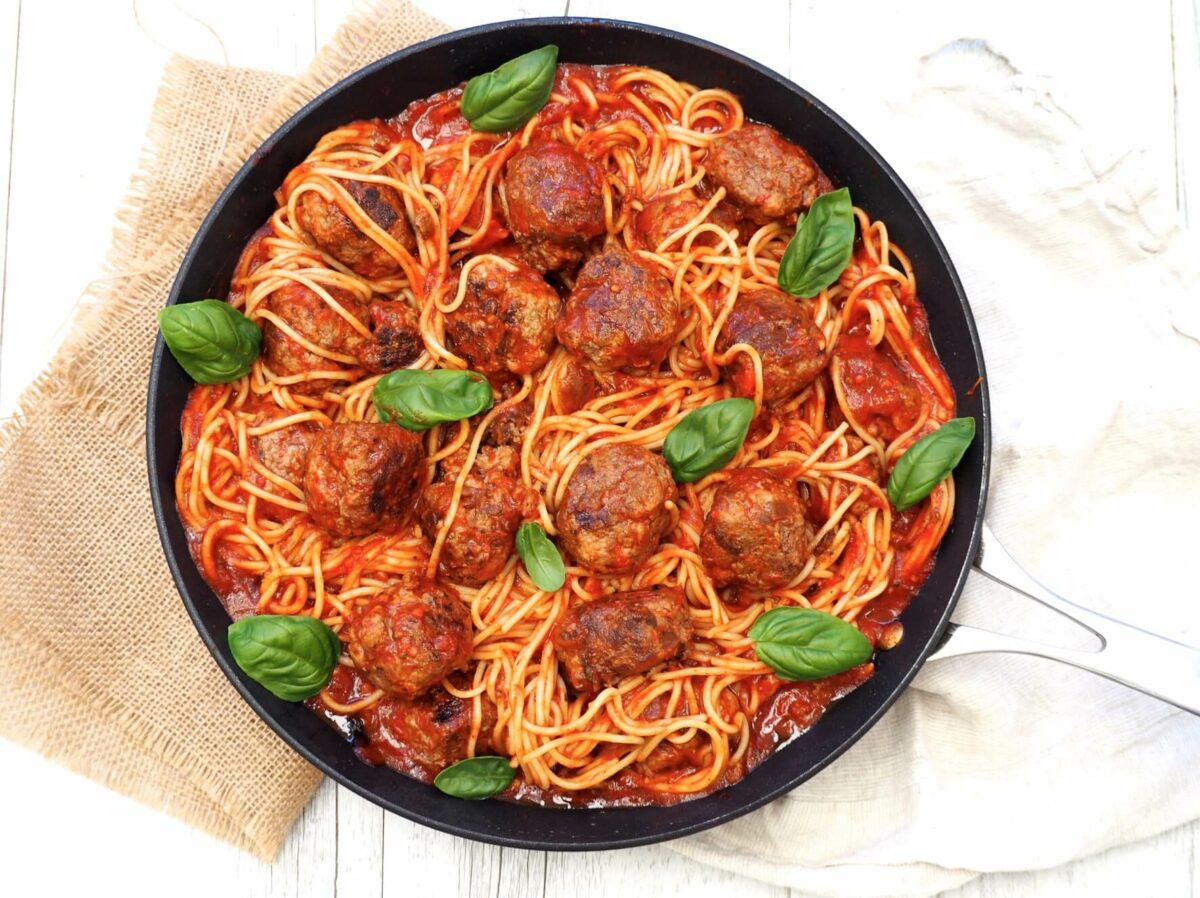
If you take out meat AND you don’t add in carbs, realistically you’re left with just some vegetables and fruit and seeds to eat. This can be imbalanced.
So if you still have residual beliefs that ‘carbs will make you fat’, ‘you can’t eat carbs after 6pm’ or ‘pasta is bad for you’…
…you’ll first need to work on changing this mindset if you want to eat less meat – and be healthy.
Right now I’m eating:
- Oats in my 5-minute Strawberry overnight oats or homemade muesli for breakfast
- Wholegrain wraps for lunches of dinner, stuffed with lots of veggies
- Brown rice, quinoa and freekeh in hearty salads e.g. a poke bowl, or a Mediterranean salad.
- Pulse pasta for main meals with a sauce that’s filled with veggies instead of just eating meat and vegetables like I previously had.
- Tins of legumes, which I add to salads.
Looking for more recipe inspo? You’ll be stoked to find hundreds of FREE, deliciously simple recipes on my website!
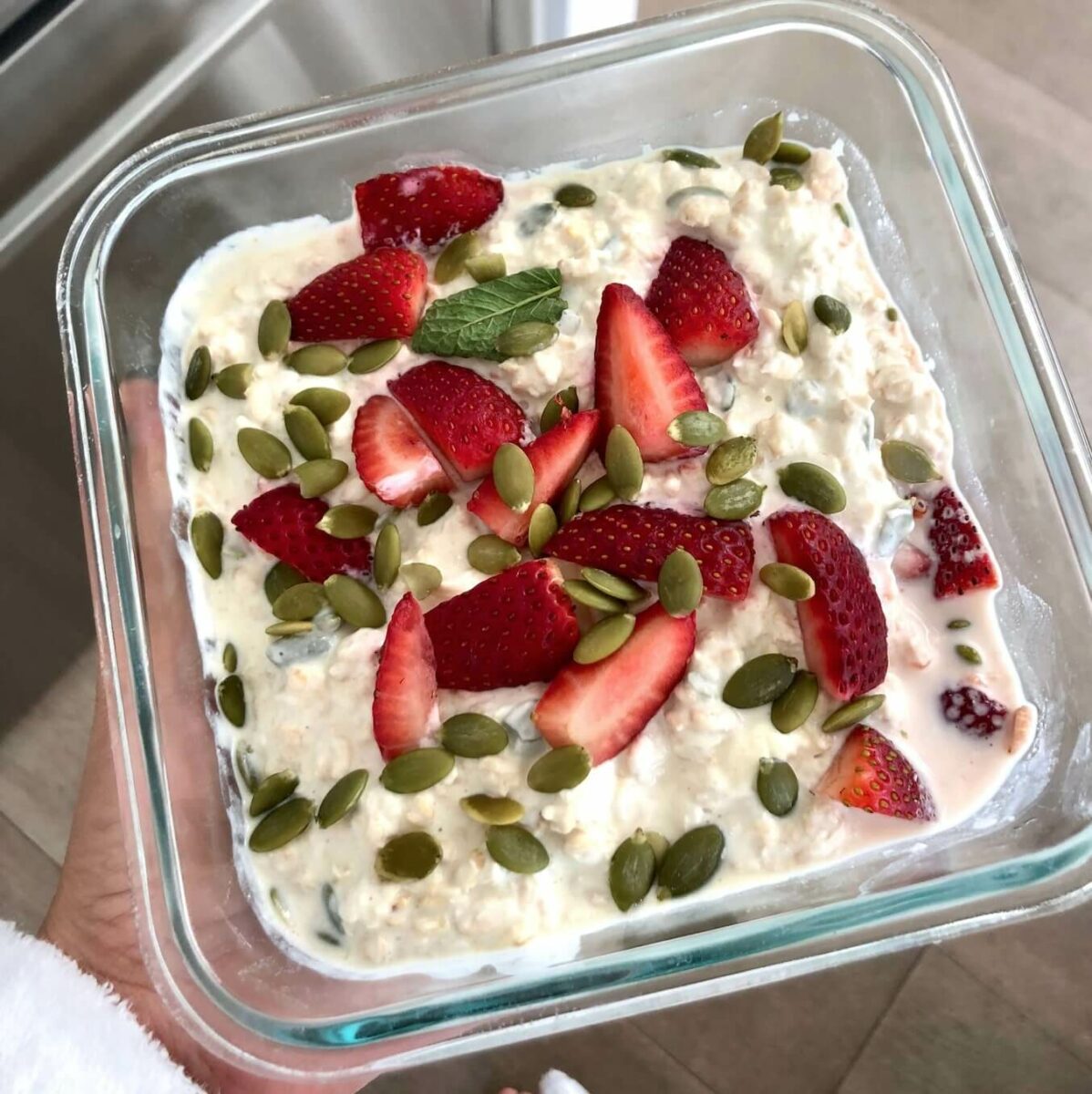
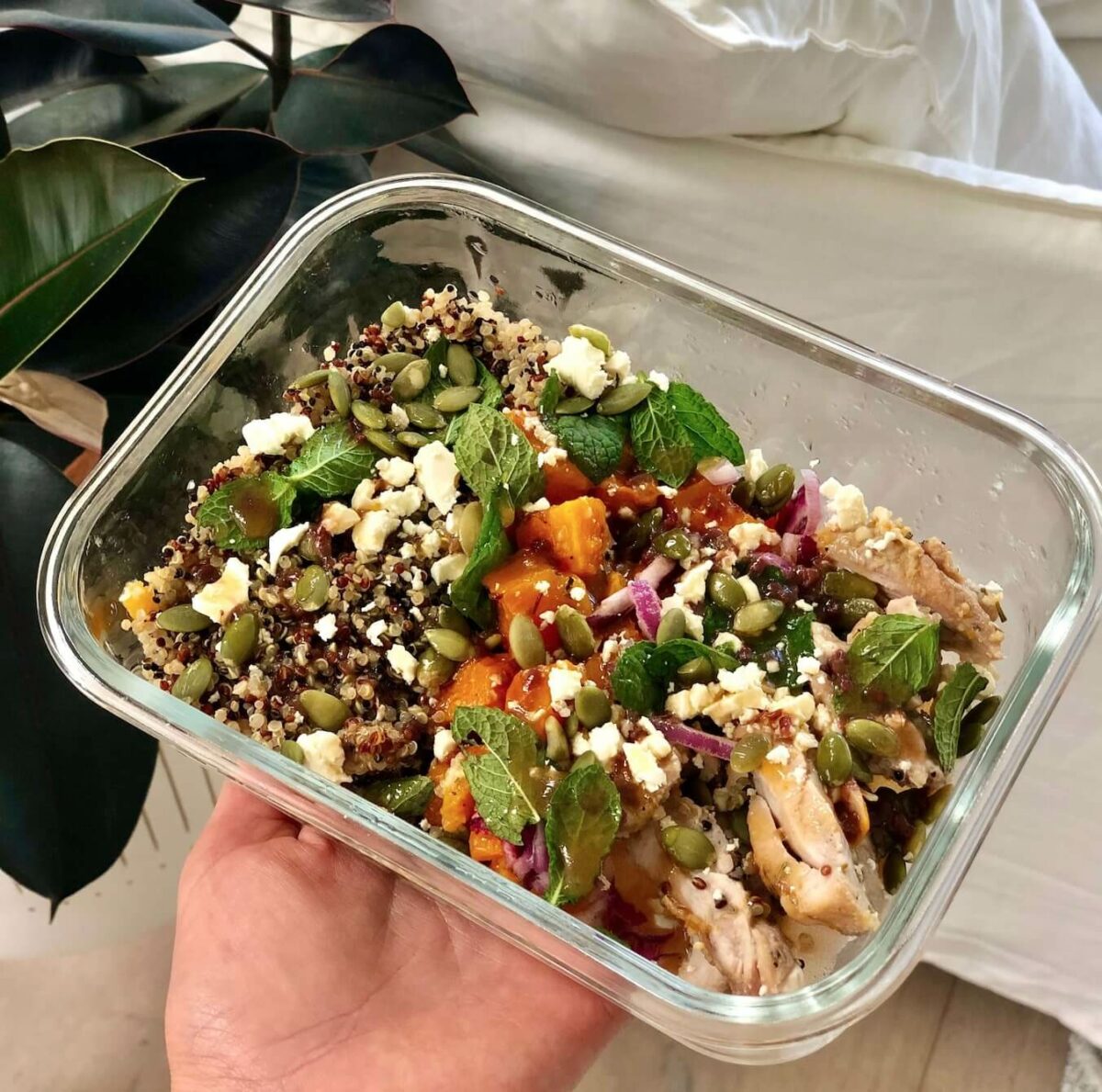
Talking about carb phobia… my podcast No Wellness Wankery, will help you sidestep wellness wankery (phew!) so you can be healthy without dieting and feel better in your already wonderful body.

Step 2. Reassess your meat serving size
I’ve set myself a flexible and gentle goal to help me eat less meat – in a healthy way.
- I try to keep meat intake to 100g (3.5oz) a day.
- ….and I also like to have a couple of vegetarian days a week.
This means that only one of my meals per day contains meat. This doesn’t always happen but it’s something I’m working on.
Eating around 100g (3.5oz) of meat gives me plenty of protein and means I don’t miss out on meat…. but it’s a small serving size.
Since reducing my meat serving size, I have found it’s easier to hit my 5+ serves of a veg a day and my recommended daily serves of whole grains.
I also save money on my grocery bill! So I can afford to buy better quality meat (because it’s less often) so it’s a win-win.
Here’s how I am eating less meat…
Example: 600g of mincemeat will have 6 serves of meat. Therefore, I simply add in more vegetables and wholegrains and beans to bulk out the meal so that I get 6 serves from the pack.
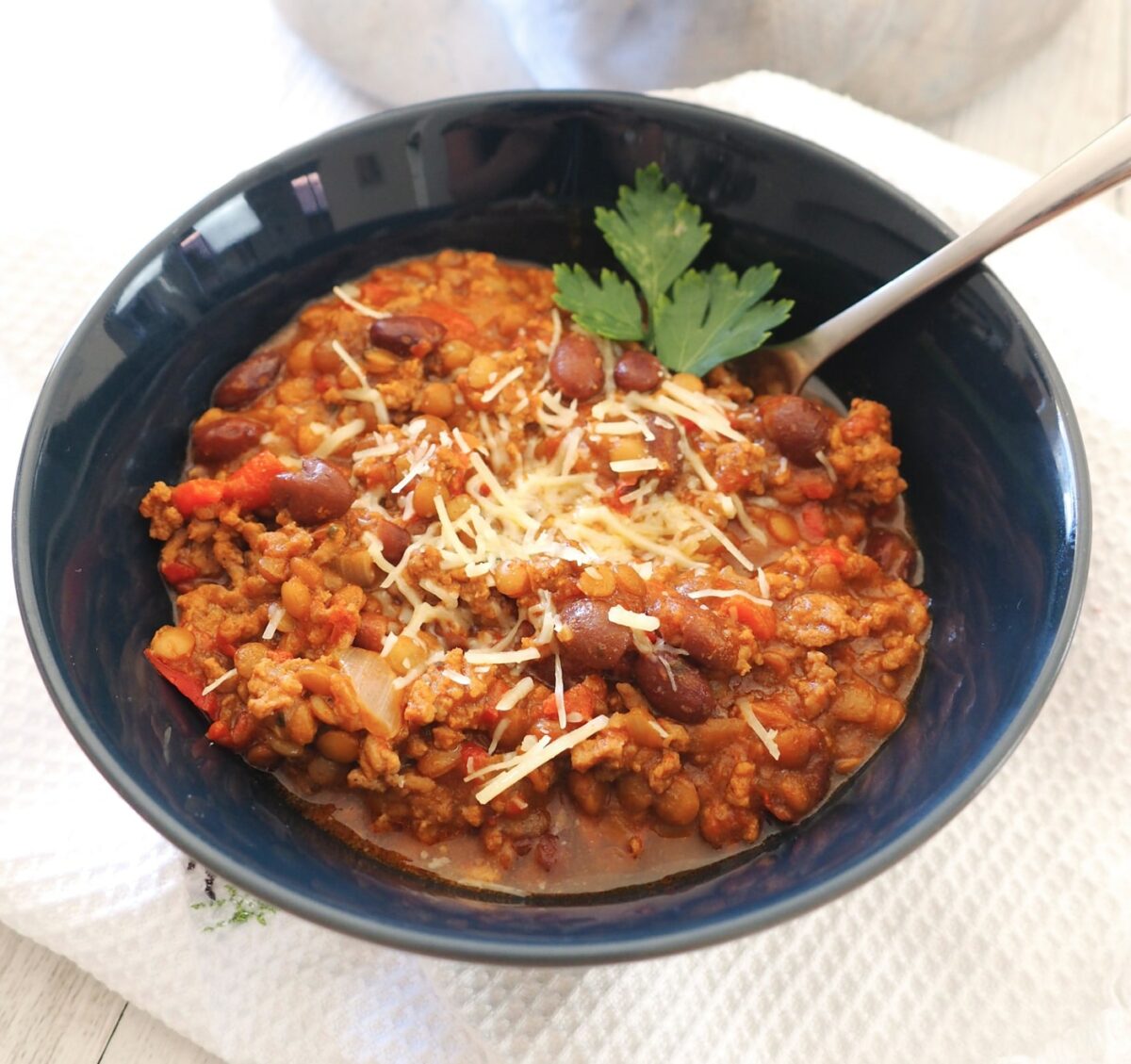
Step 3. Getting enough protein (it’s easy)
Wondering how to get enough protein without meat?
We’ve been conditioned to think that we need to fill our diets with protein to grow muscles and be strong. This isn’t true.
Unless your diet is made up of processed and refined carbs, you’ll easily be able to get enough protein without adding in supplements or loading up with meat.
(Personally, I think protein powders are silly and don’t recommend them because they’re highly processed – and you can get plenty of protein from food).
Eating too much protein makes your farts smell bad. True story.
Plus – It’s expensive. And it sometimes means you don’t eat enough whole grains, fruits and vegetables because you’re too full from protein-based foods.
The wonderful thing is you can get enough protein in your diet by eating more plant-based foods.
If you eat dairy, then milk, yoghurt and cheese (like ricotta or bocconcini) is a great way to get some protein. Eggs are another option.
But if you want to eat more plant-protein, these are some of my favourites:
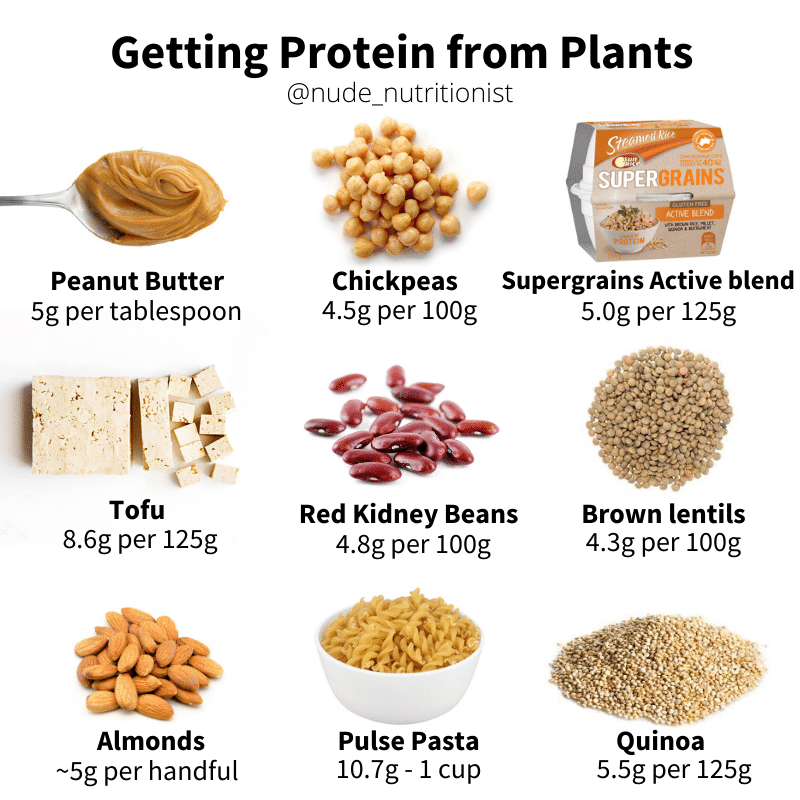
Step 4. Consider your iron and b12 intake
Admittedly, I’m not a major fan of red meat. Practically, red meat is easily the best source of iron.
Iron is important because it helps give you energy (as iron transports oxygen around your body). If the oxygen can’t get around your body, you feel fatigued.
Right now, I eat red meat once a week – normally on Friday night when someone else in my family makes it. (This is still much more frequent than the Mediterranean diet, in which you eat red meat around once a month).
Wondering how to get iron if you don’t eat meat?
I try to get a source of plant-based iron (non-haem) into my diet. Foods like spinach, lentils, kidney beans, nuts, seeds, chickpeas and oats contain plant-based iron.
Note: plant-based iron isn’t as readily absorbed by your body. By adding vitamin C rich foods such as capsicum, cauliflower, capsicum/peppers, avocado – when you eat plant-based iron foods – you may boost absorption of plant-based iron.
If you don’t eat enough vegetables, wholegrains, seeds and nuts, it can be really hard to get enough iron. And even if you do, you still might not get enough.
You might need an iron supplement. Your doctor (not some random from the internet) will be the best person to recommend this to you after you’ve had a blood test.
B12 is found in animal-based foods so if you’re cutting out all animal, you’ll need to supplement this. I still eat animal products so this isn’t a concern for me. Of course, speak to your doctor.
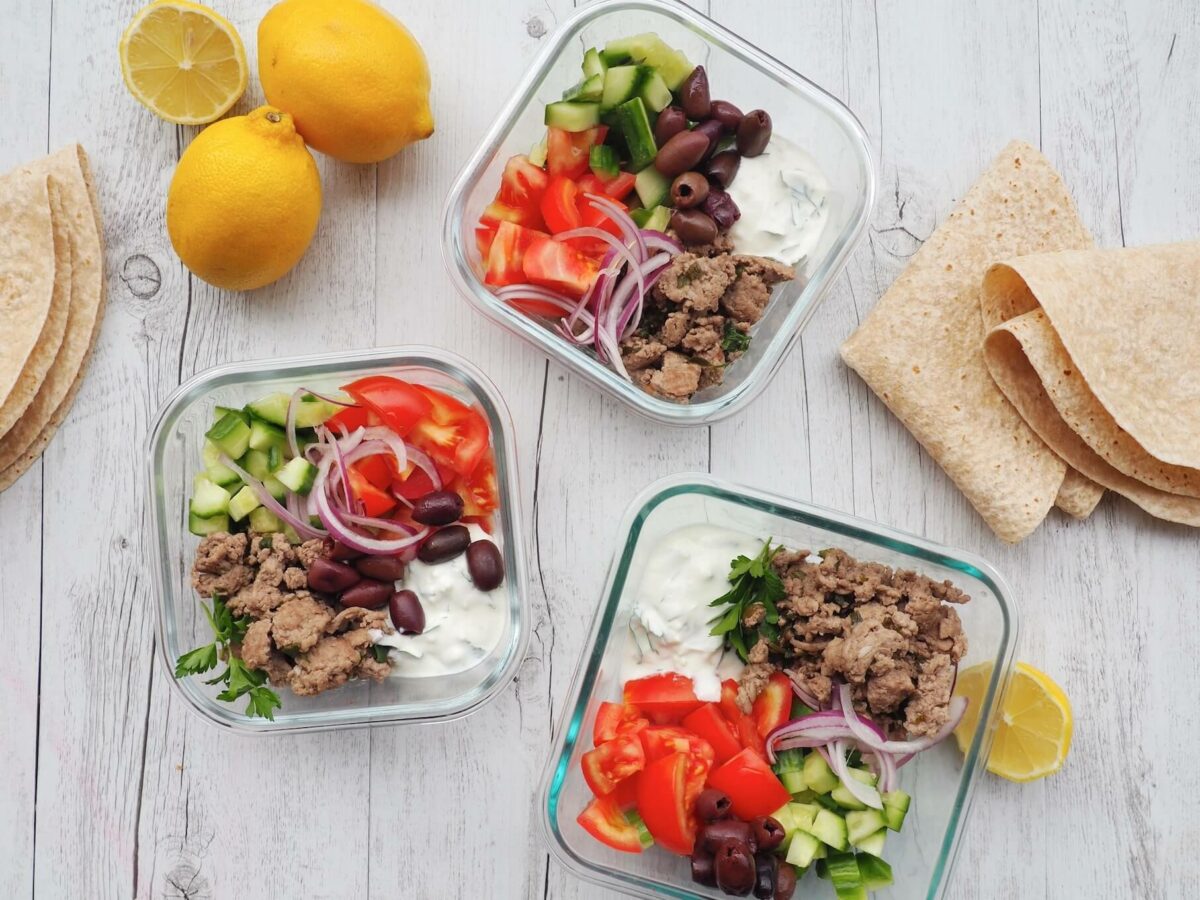
Step 5. Change up the type of meat
I still eat fish. I especially love oily fish like salmon which contains omega-3s for brain and heart health. I do still eat white meat like chicken. I like free-range. I eat beef or lamb once a week, depending on what is for Friday family dinner.
Here’s an example of what I ate for the last two days:
DAY 1
First thing: Homemade coffee with milk and chocolate flakes on top ????
Breakfast: An omelette with mushrooms, tomatoes, feta, asparagus and two whole-grain crackers
Lunch: Pulse pasta with homemade anchovy sauce with tomatoes, fresh chilli and kalamata olives
Snack: Chopped tomato with baby bocconcini + balsamic glaze
Dinner: Brown rice salad bowl with corn, 100g grilled chicken, feta, coleslaw mix, baby spinach, capsicum, red onion and dressing.
Snack: A peanut butter bliss balls (recipe in Back to Basics)
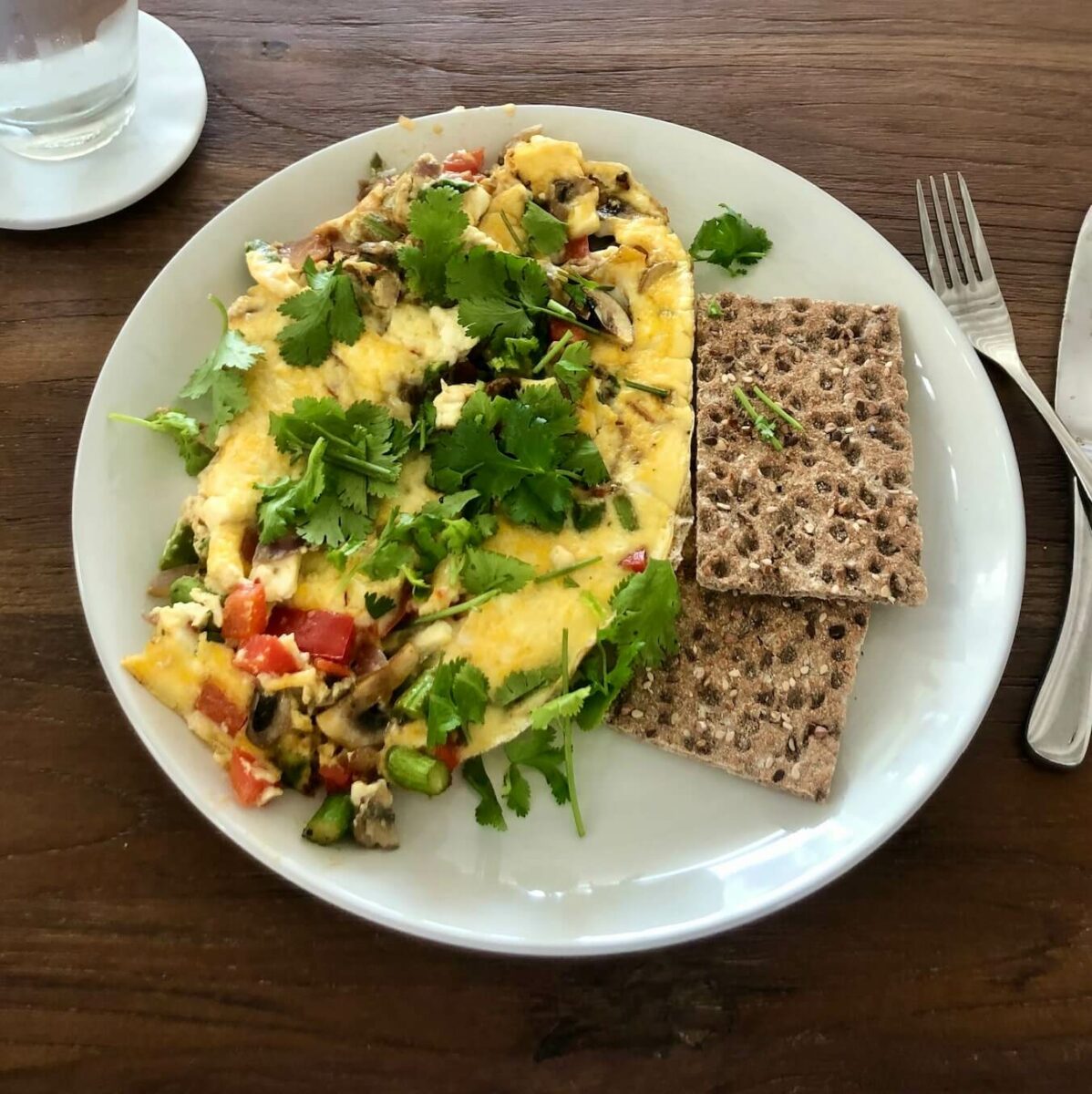
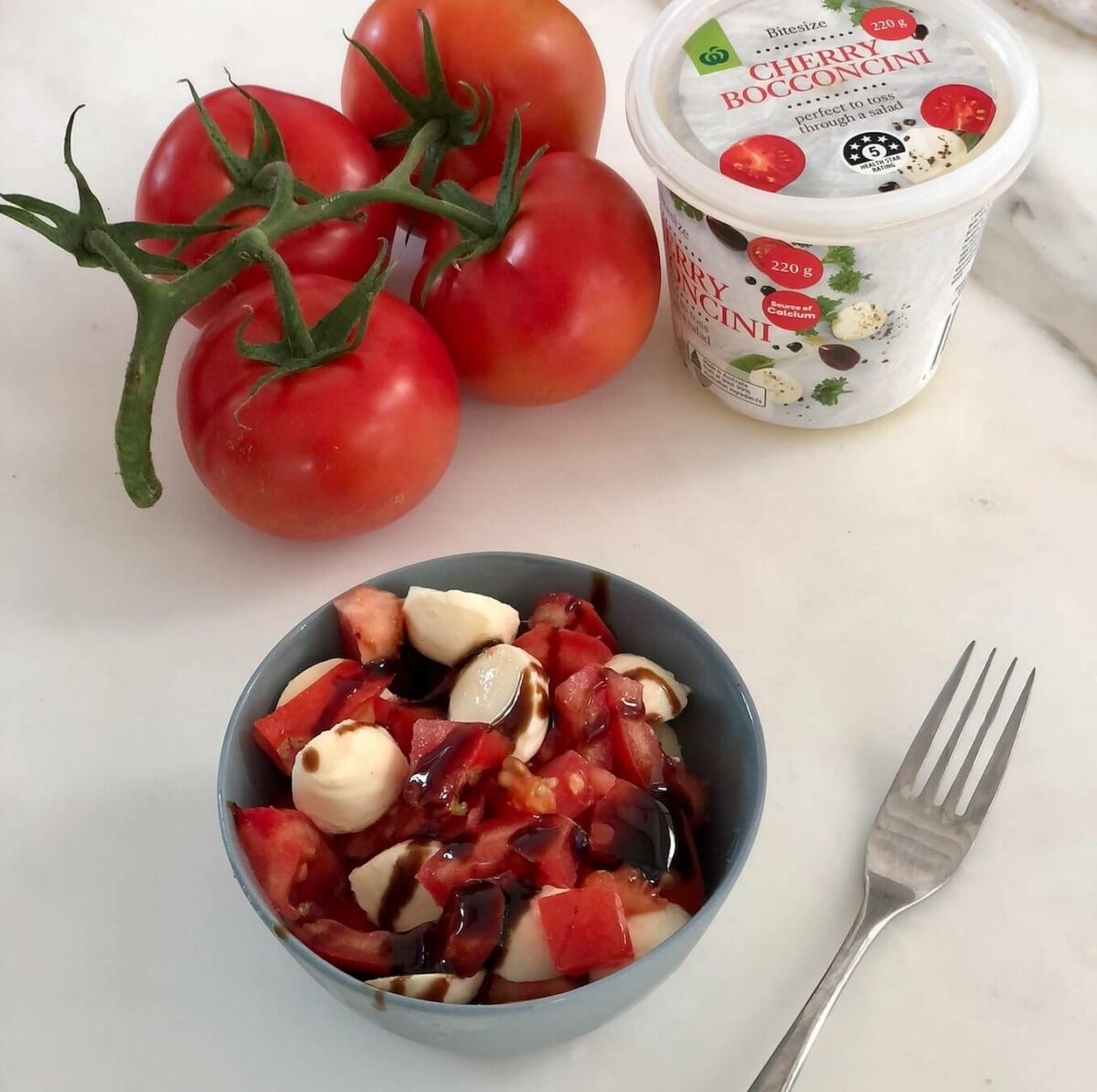

DAY 2
First thing: Homemade coffee with milk and chocolate flakes on top
Breakfast: Mango Chia pudding (recipe in Back to Basics).
Lunch: Wholegrain wrap with coleslaw mix, tomatoes, avocado, feta
Snack: A green apple with 2 tbsp almond butter
Dinner: SunRice Brown Rice and Quinoa, with a small tin of salmon, corn, carrots, lettuce, onion, tomatoes, coriander, chilli, avocado, mixed seeds with dressing.
Snack: Homemade mango ice-block (recipe in my book)
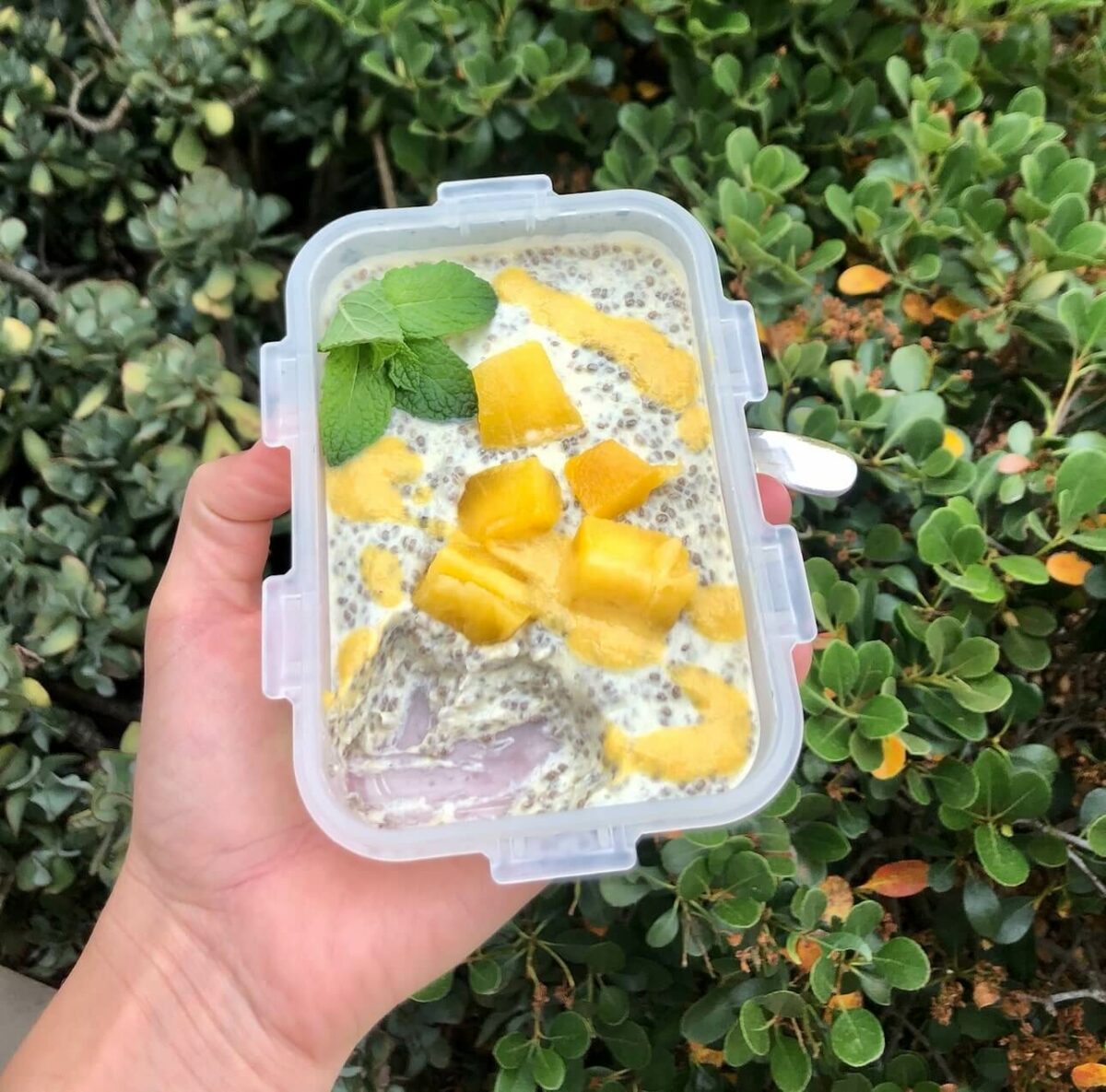


That’s 25+ different plants based foods in just two days of eating.
(It’s recommended that you aim to eat 30+ different plant-based foods a week for a healthy gut microbiota).
I’m not sharing this as a meal plan. I hate meal plans (as a matter of fact, click here to get the only meal plan I recommend). Meal plans don’t work because they’re diets in disguise. But I just wanted to show you a practical example of how it looks to eat less meat and eat more plants – with balance.
What you might notice is that my plates are filled with colourful vegetables and whole grains. There is texture – and the meals are interesting.
I still eat dairy and meat and eggs but they aren’t the centre of my meals. They simply add to my vegetable-based diet.
Step 6. Plan your meals around vegetables + whole grains, not meat
I got this idea from Ottolenghi and I think it’s great.
Often when we cook – we pick the meat first (e.g. chicken) and work out what to cook from there.
Instead, start by choosing a whole grain first (e.g. Freekeh, brown rice, freekeh, barley) or a vegetable (e.g. Pumpkin, tomatoes, cabbage) and then trying to come up with a recipe using that plant food as your starting point.
It’s also a great way to stop yourself from getting into a food rut.
If this sounds overwhelming, and you need a little help trying to work out what to cook each night – check out Back to Basics. I’ve designed it to be super flexible and help you cook easy, healthy 20-minute meals at home so you get less takeaway and feel good.
Anyway!
That’s what I’m working on right now when it comes to my health.
Are you trying to eat less meat? Leave a comment and let me know either way. What works for you? I’d love tips as well!
Big love,
Lyndi
xx
Disclaimer: I’m lucky to work with SunRice, and that’s because whole grains and rice are brilliant. :)